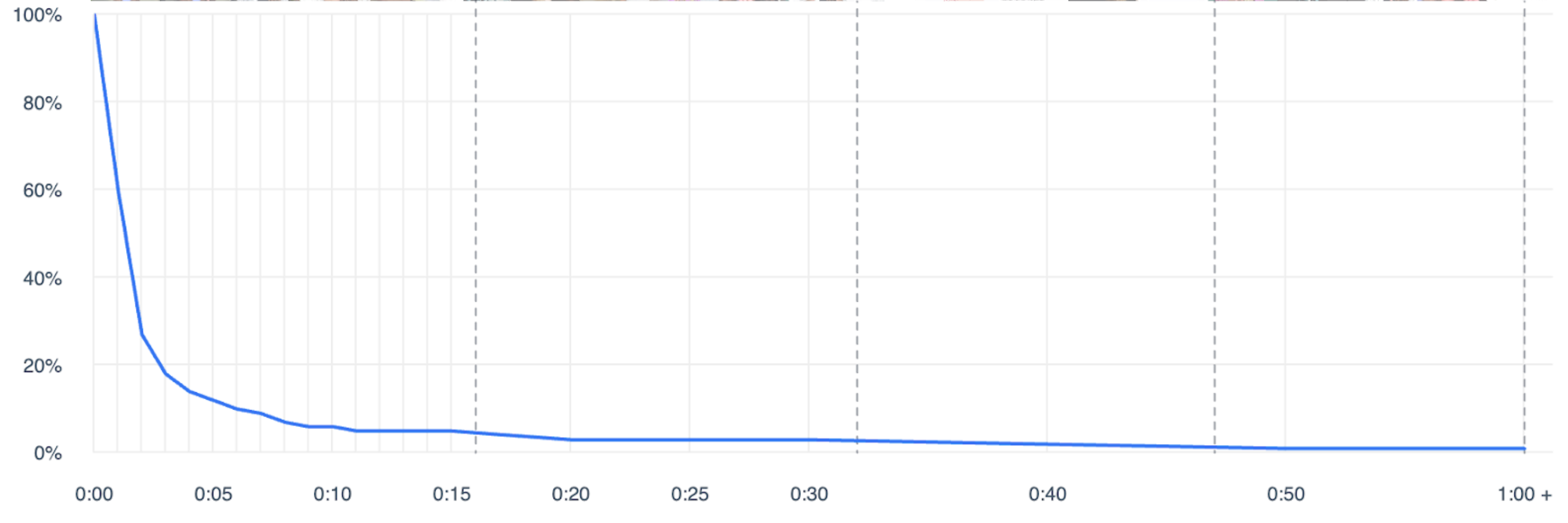More than the Devil in the Details: Online Customers Are Showing More Receptivity to Longer Ads on Social Media
Much has already been said about the attention span of modern people online, from lamenting it is becoming shorter to the inevitable counterargument that, in an era where podcasts lasting multiple hours are some of the most popular content online, you can’t really say people just can’t pay attention.
People with PhDs and impressive resumes can continue this debate, but the simple fact is that, for as long as I’ve been working in online advertising, shorter video ads have, as a rule, outperformed longer ones - but that may be changing.
In the past three months at BMG360, I’ve created four ad concepts where we analyzed whether longer videos with more information or shorter videos that get to the point faster do better, and the results of the tests have been surprising. Across all four, the longer videos have won.
For certain clients, this has been more surprising than others. Our most recent test was for a client involved in mortgages, which is a complicated topic where educating potential customers is important. There, we found over the past two months that the longer version of their video hit the client’s KPI over 75 times, while the shorter version was less than 3.
This trend hasn’t been isolated to such a complicated space, however. Our most surprising result has been for a fashion app we want customers to install. This client has specifically noted that they’ve seen shorter videos perform better for a long time.
When we tested videos with the same hook against each other, however, the results were very clear. The shorter video achieved 12 app installs through December and January. The longer video achieved 148.
The reasons for this are unclear, and we can only make educated guesses at this stage. One explanation could be that, as Facebook users tend more towards being an older demographic, they’re more willing to watch longer videos. This tracks well with a previous client we’ve worked with, who focussed on lowering cholesterol for customers. Those ads, naturally, were always aimed at an older demographic, and longer videos always did best for them.
Alternatively, in the age of TikTok, people may now be more used to going into a video without expectations. They may be more open to giving a video that promises to give valuable information a chance. Many of our hooks have led with text boxes that promise we will give multiple reasons or ways to accomplish a task. That approach has been working when paired with these longer videos, which can actually go into the level of detail you simply can’t in a 15-second ad.
Note that this doesn’t mean that many people are sitting there and watching the whole ad. Here’s the chart showing the percentage of people who sit and watch through to the minute mark on the top-performing ad for the client involved in mortgages:

As you can see, by the time we get to 15 seconds, like with most ads, we have only about 5% of people still watching, and that number only continues to decrease over time.
Even so, in terms of raw numbers, over 4,000 people watched the video to the halfway point. Of those still watching, one can assume they are at least somewhat interested but still need to see that one last bit of information that convinces them to click the link.
With more time, these longer videos can hit more value props. Our current working theory is that this approach gives us more chances to hit the value prop that shifts a viewer to being a customer.
This is still just a theory, though, and we’ll be working on refining it through one of our core strengths: iterative testing.
Either way, these longer video experiments yielded what I believe to be the best sort of result - one that corrects previously held theories with actionable information.
Based on these tests, I will be looking for spaces where clients can increase their customer base by giving earnest and detailed explanations of their products and trusting that, so long as they genuinely have something useful to say, people will stop and listen.